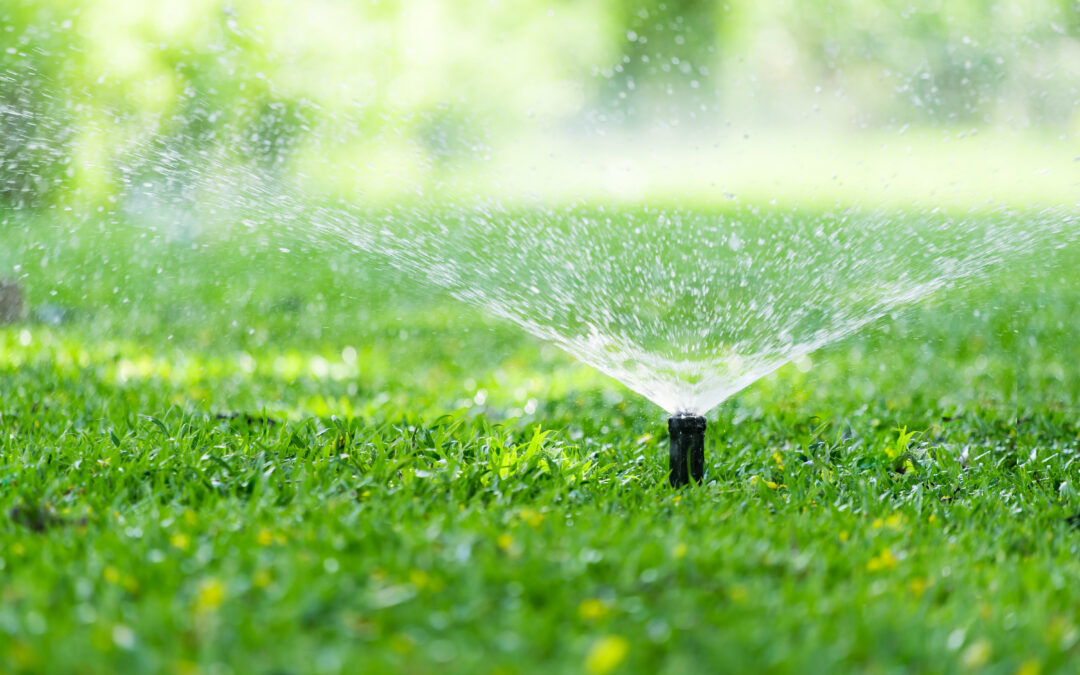The temperature isn’t the only thing that increases during the summer. Ice cream consumption, sunglasses purchases and BBQ frequency all go up, for example. Lawn care is another instance of this, as it’s more important to care for your lawn so that it doesn’t die.
You don’t necessarily have to work harder to take care of your lawn in the summer, but you do need to be smarter about it. In honor of this, here are some tips and best practices to consider as we enter summer.
Best Practice #1: Water Wisely
Even if your lawn turns brown, it’s still important to water it regularly to keep it healthy during the summer heat. Deeply and infrequently is the preferred method here (as opposed to shallow, frequent watering). Aim to provide about an inch to inch and a half of water per week, keeping the soil moist to a depth of six to eight inches. Try to avoid watering during the hottest part of the day, as you can lose water through evaporation and it won’t have as much of an impact. Water during the early morning or overnight instead.
Best Practice #2: Mow Regularly
Mowing isn’t just for your lawn’s appearance. It’s also essential for its health, as the length of your grass will determine whether it has the right balance between light and water. Mowing too short can stress the grass and make it more susceptible to drought and heat damage. Not mowing enough can leave it long and make it more difficult for water to penetrate the soil before it evaporates. Set your mower blades to the appropriate height (about one-third of the grass length) and keep it there. Investing in a high-quality mower is another consideration here.
Best Practice #3: Fertilize Strategically
Your lawn needs nutrients just like you do, as it helps it withstand the stress of summer heat and promotes that lush green color we all love. Slow-release fertilizers are a good option to consider, as they’re formulated for summer use. (Just be sure to follow the manufacturer’s instructions carefully). Avoid fertilizing during periods of drought or extreme heat, as you can actually burn the grass with this technique. Spreaders and fertilizing attachments make the job quicker and efficient, so consider purchasing one if you haven’t already.
Best Practice #4: Control Weeds and Pests
As if the heat wasn’t enough, weeds and pests like to take advantage of weakened grass during the summer months. For weeds, you can keep them at bay by regularly pulling them early in their growth, or using herbicides as needed—good fertilizer with weed control can also help. For pests, monitor your lawn regularly for infestations. Common signs include brown patches or chewed grass blades. If you do have pests, take appropriate action to control them with dedicated pest control solutions or fertilizer that focuses on the three big areas of lawn care (grass growth, weed control and pest control).
Best Practice #5: Provide Shade and Protection
While your grass needs lots of sunshine, too much can make it tough to survive. But you can help your lawn beat the heat by providing some shade and protection. How? Planting trees or installing shade sails can help, as it reduces temperature stress and limits water evaporation from the soil. But another way you can help is to avoid heavy foot traffic on your lawn during peak heat hours, as compaction during this part of the day can damage the grass faster than it would at other times.
Best Practice #6: Aerate and Dethatch
One technique many homeowners tend to forget (or simply don’t want to use energy on) is aeration. But soil aeration improves water penetration, promoting healthier root growth and overall lawn vigor. If you do this during early summer, it can alleviate soil compaction and allow your fertilizer to work better. Dethatching is also a wise idea if there’s a buildup of organic debris. The good news is that there are a variety of aerators and dethatchers available from outdoor power equipment providers like Classic Turf Equipment to make this job simple and effective.
Best Practice #7: Stay Vigilant
Finally, keep your eyes on the lawn. Stay vigilant about your lawn’s condition throughout the summer and pay attention to signs of stress like wilting, browning or thinning grass. Take prompt action to address these issues and it will prevent further damage down the road. By staying vigilant, you can ensure that your lawn remains healthy and vibrant despite the challenges of summer weather.
Classic Turf Equipment is one of Dallas-Fort Worth’s leading outdoor power equipment retailers and service providers. To consult with us about your lawn and shop equipment that can make taking care of it easier, be sure to stop by one of our North Texas locations today.

Recent Comments